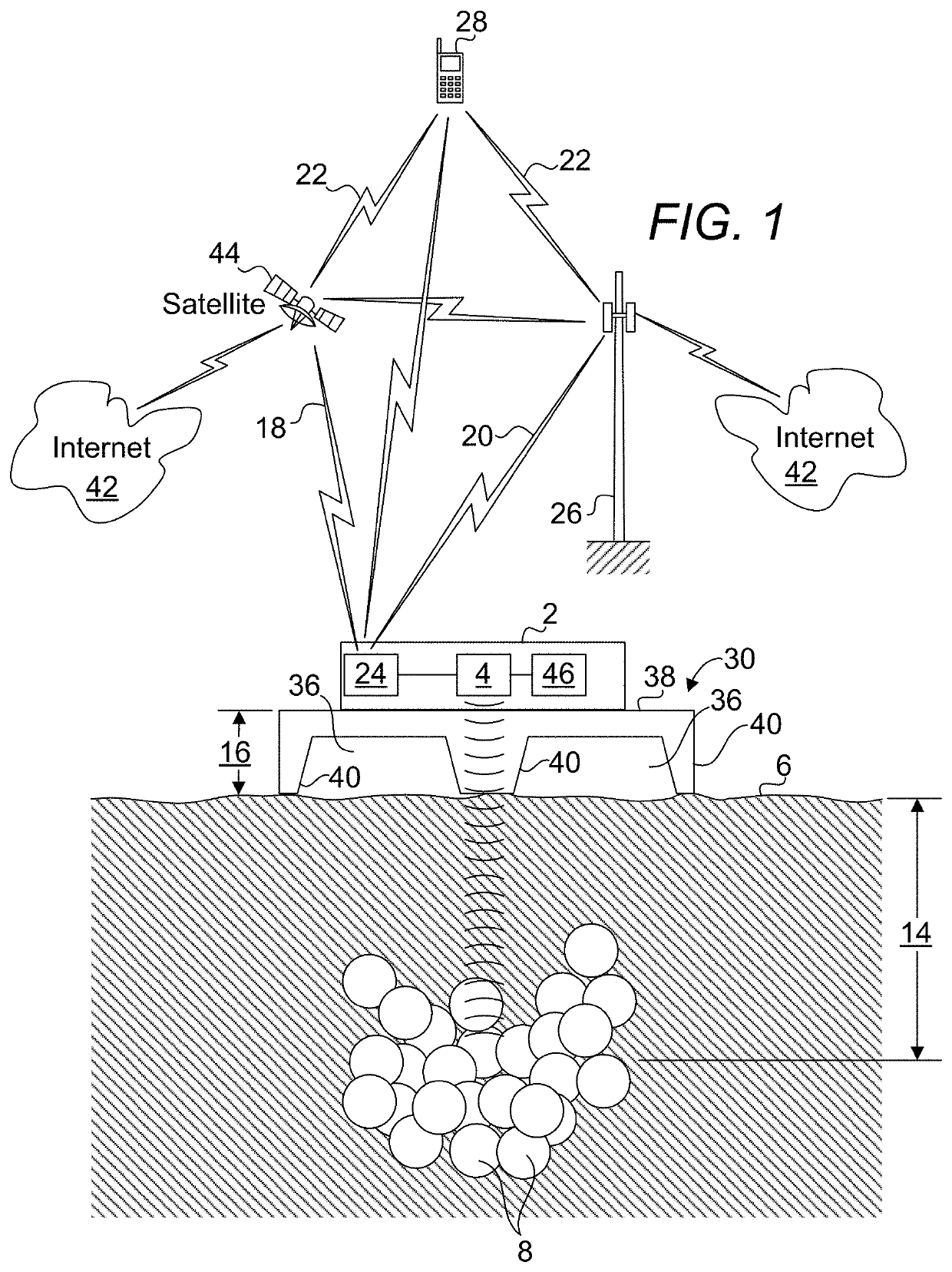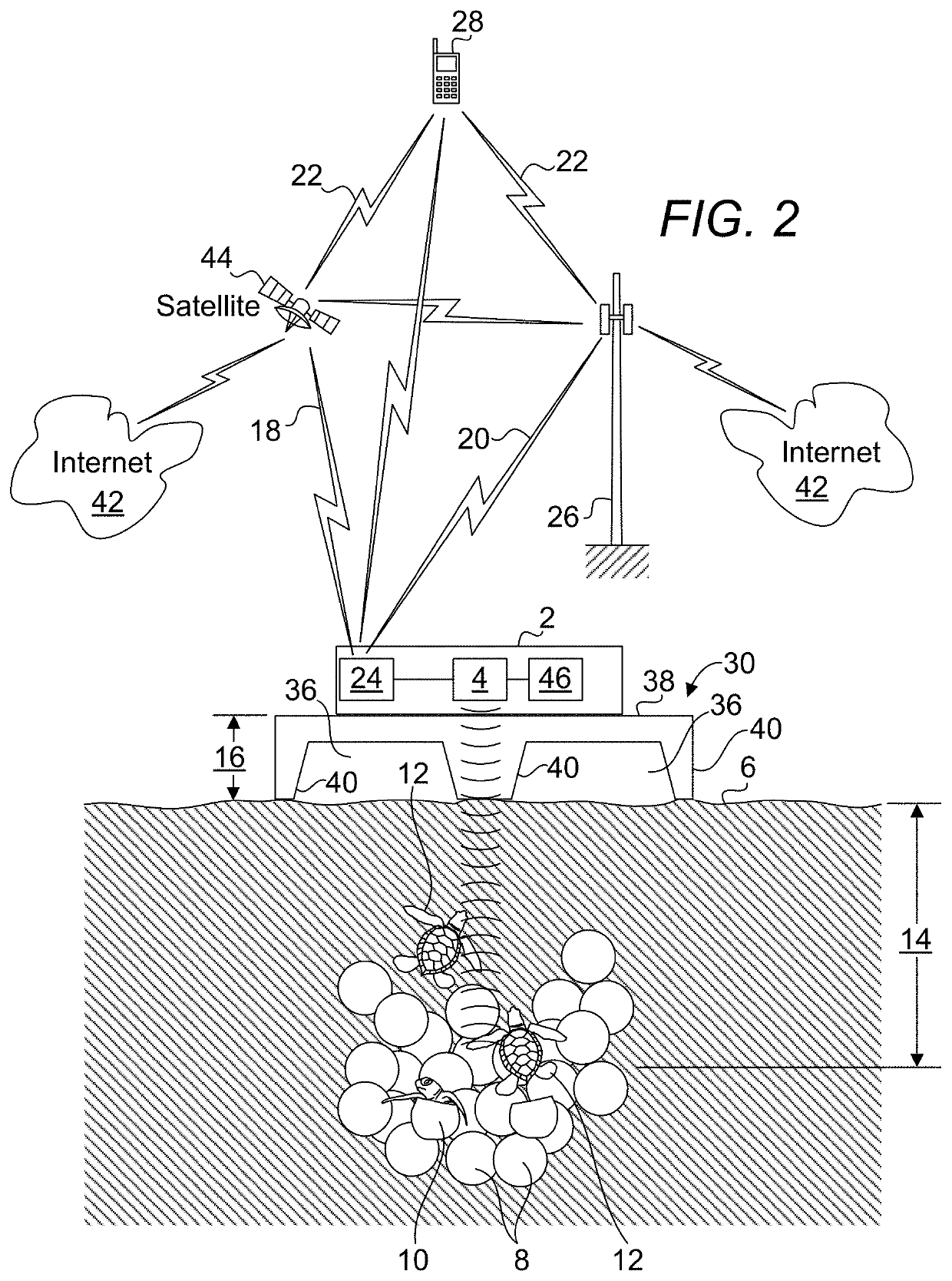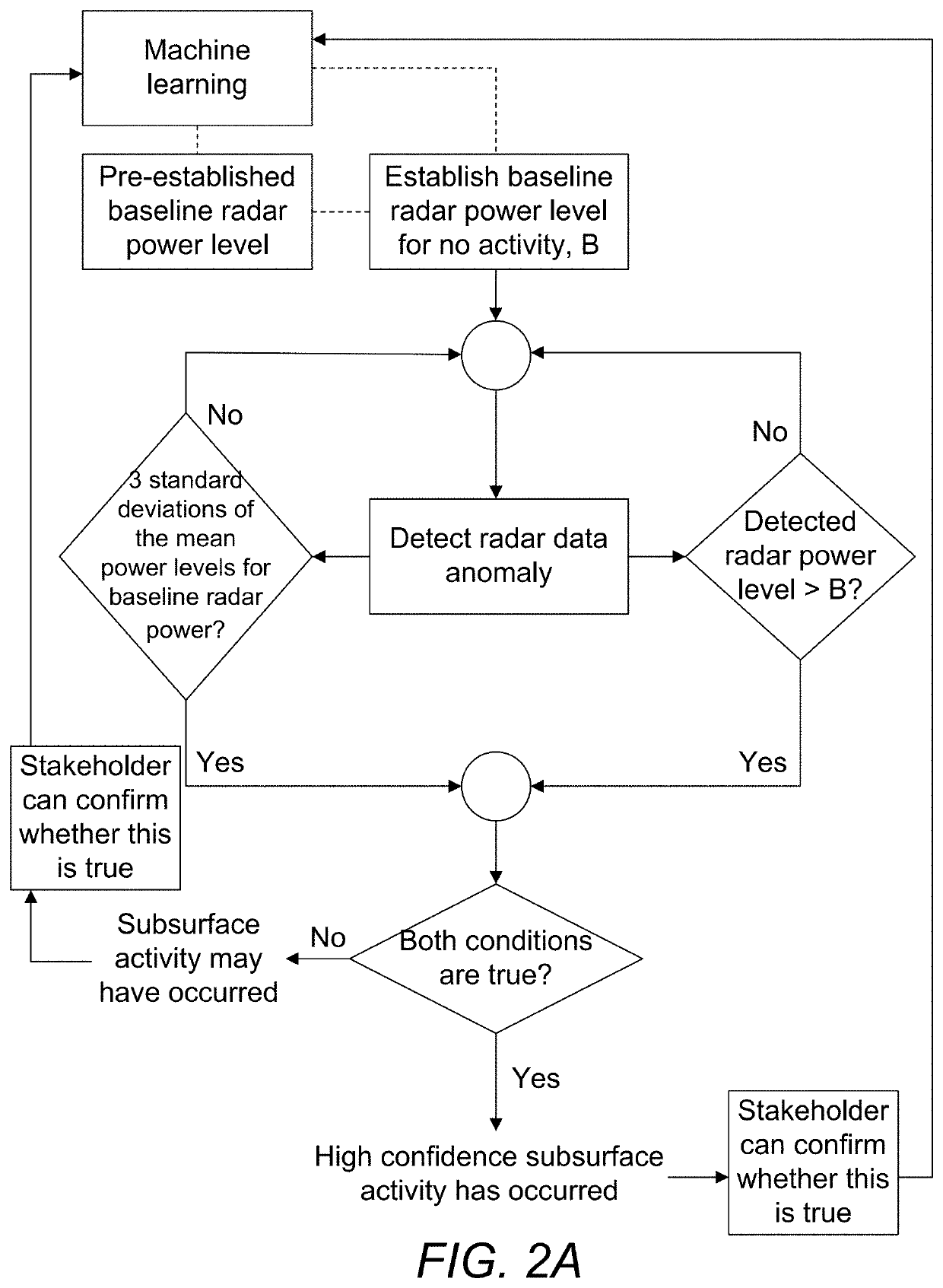Activity detection in sand environment
a technology of activity detection and sand environment, which is applied in the field of surface/subsurface activity detection system and method, can solve the problems of inability to locate all nests, inability to detect all nests, and inability to meet the needs of monitoring and monitoring turtles, so as to achieve reliable early warning of hatching turtles and reliable early warning of turtles
- Summary
- Abstract
- Description
- Claims
- Application Information
AI Technical Summary
Benefits of technology
Problems solved by technology
Method used
Image
Examples
Embodiment Construction
[0054]The term “about” is used herein to mean approximately, roughly, around, or in the region of. When the term “about” is used in conjunction with a numerical range, it modifies that range by extending the boundaries above and below the numerical values set forth. In general, the term “about” is used herein to modify a numerical value above and below the stated value by a variance of 20 percent up or down (higher or lower).
[0055]The term “stakeholder is used herein to mean a turtle, wildlife or conservation researcher or worker, park ranger, conservationist, etc., or any personnel that otherwise takes an interest in the conservation, propagation and well-being of species of turtles in their natural habitats.
[0056]According to the article “Cues used by Predators to Detect Freshwater Turtle Nests may Persist Late into Incubation” by Riley et al. (hereinafter Riley), predator clues include smell of oviductal fluid (cloacal mucus) exuded by sea turtles during oviposition (laying) of e...
PUM
 Login to View More
Login to View More Abstract
Description
Claims
Application Information
 Login to View More
Login to View More - R&D
- Intellectual Property
- Life Sciences
- Materials
- Tech Scout
- Unparalleled Data Quality
- Higher Quality Content
- 60% Fewer Hallucinations
Browse by: Latest US Patents, China's latest patents, Technical Efficacy Thesaurus, Application Domain, Technology Topic, Popular Technical Reports.
© 2025 PatSnap. All rights reserved.Legal|Privacy policy|Modern Slavery Act Transparency Statement|Sitemap|About US| Contact US: help@patsnap.com



